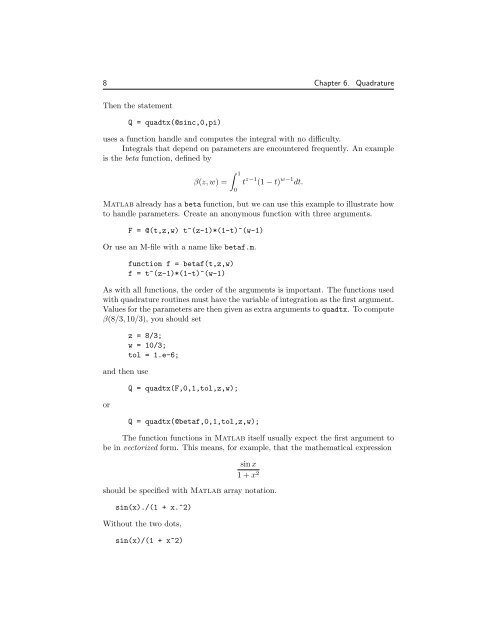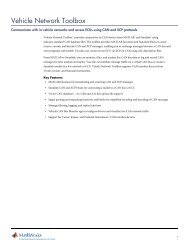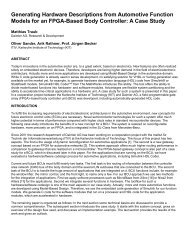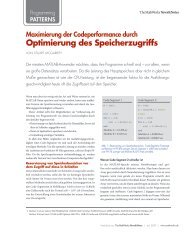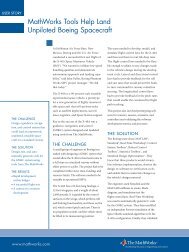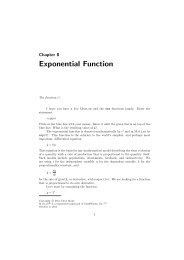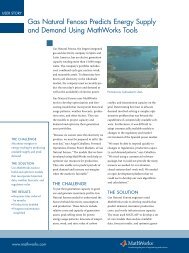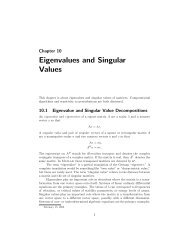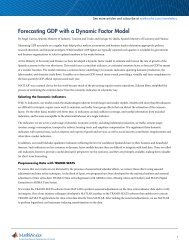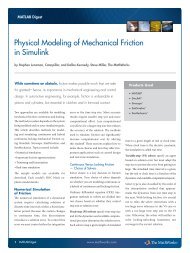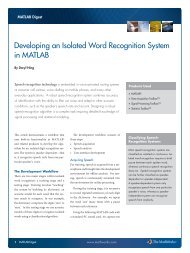Chapter 6. Quadrature - MathWorks
Chapter 6. Quadrature - MathWorks
Chapter 6. Quadrature - MathWorks
Create successful ePaper yourself
Turn your PDF publications into a flip-book with our unique Google optimized e-Paper software.
8 <strong>Chapter</strong> <strong>6.</strong> <strong>Quadrature</strong><br />
Then the statement<br />
Q = quadtx(@sinc,0,pi)<br />
uses a function handle and computes the integral with no difficulty.<br />
Integrals that depend on parameters are encountered frequently. An example<br />
is the beta function, defined by<br />
1<br />
β(z, w) =<br />
0<br />
t z−1 (1 − t) w−1 dt.<br />
Matlab already has a beta function, but we can use this example to illustrate how<br />
to handle parameters. Create an anonymous function with three arguments.<br />
F = @(t,z,w) t^(z-1)*(1-t)^(w-1)<br />
Or use an M-file with a name like betaf.m.<br />
function f = betaf(t,z,w)<br />
f = t^(z-1)*(1-t)^(w-1)<br />
As with all functions, the order of the arguments is important. The functions used<br />
with quadrature routines must have the variable of integration as the first argument.<br />
Values for the parameters are then given as extra arguments to quadtx. To compute<br />
β(8/3, 10/3), you should set<br />
and then use<br />
or<br />
z = 8/3;<br />
w = 10/3;<br />
tol = 1.e-6;<br />
Q = quadtx(F,0,1,tol,z,w);<br />
Q = quadtx(@betaf,0,1,tol,z,w);<br />
The function functions in Matlab itself usually expect the first argument to<br />
be in vectorized form. This means, for example, that the mathematical expression<br />
sin x<br />
1 + x 2<br />
should be specified with Matlab array notation.<br />
sin(x)./(1 + x.^2)<br />
Without the two dots,<br />
sin(x)/(1 + x^2)


